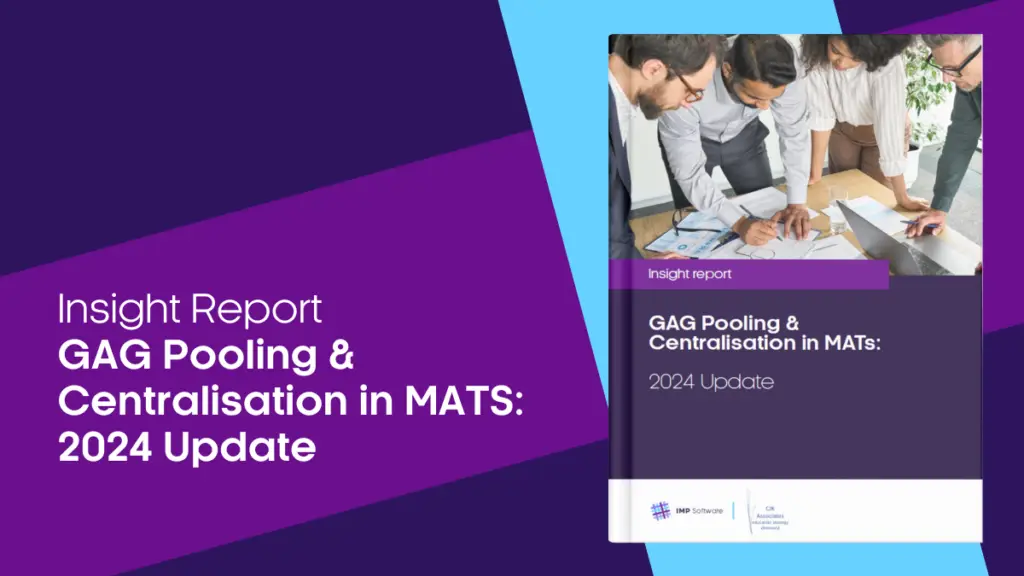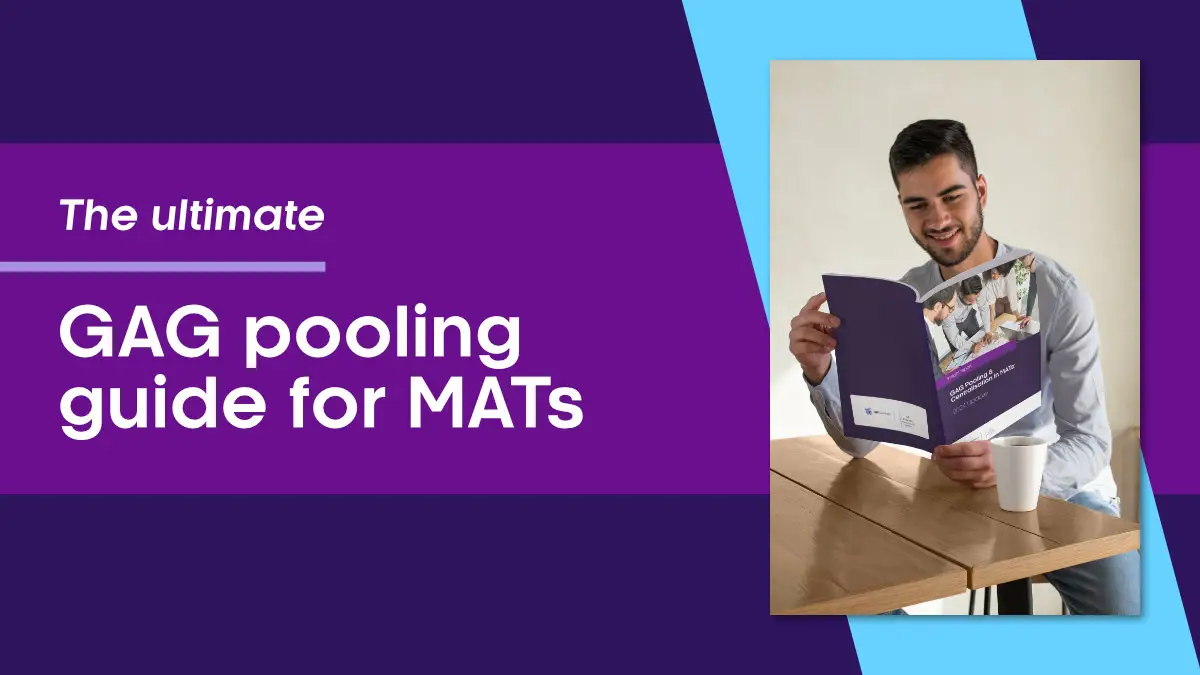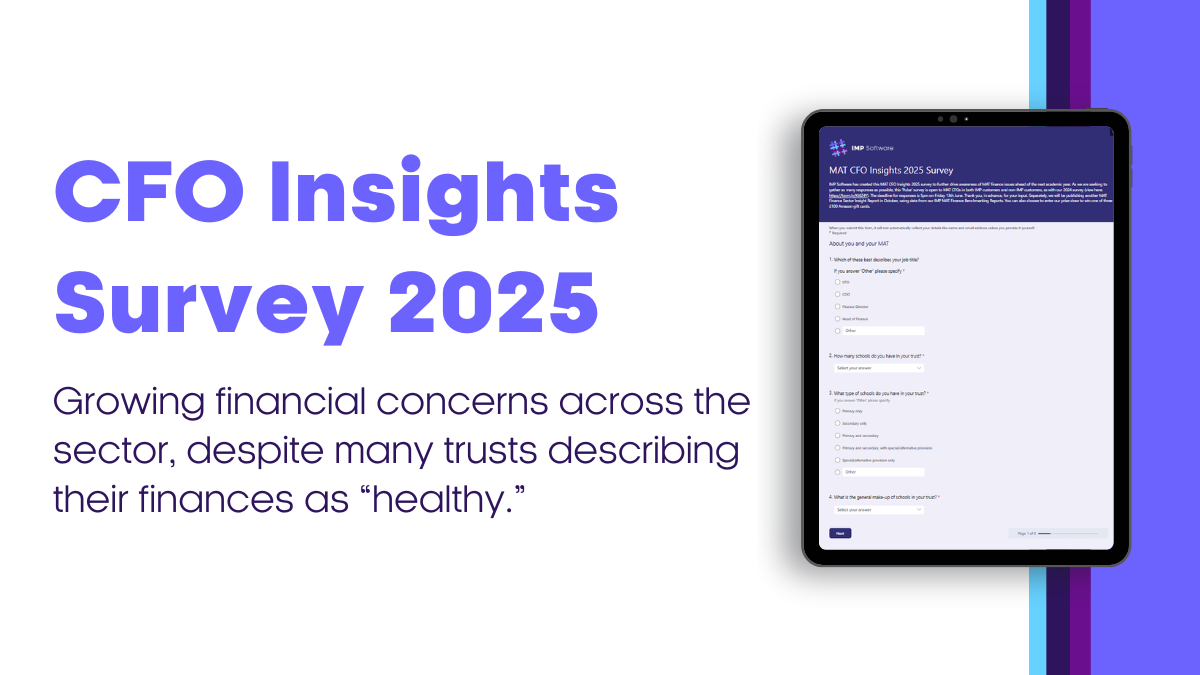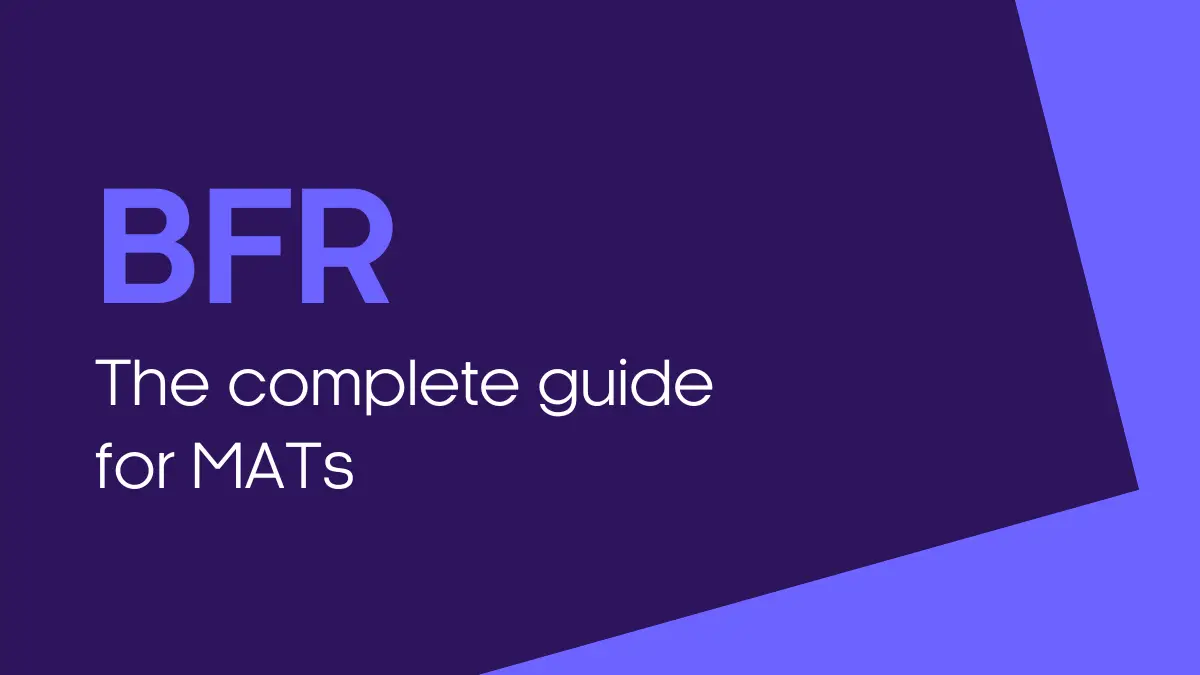Contents
Introduction
GAG pooling has been described as “one of the greatest freedoms a MAT has” and is a topic that’s rising in popularity. Yet, according to our latest research, just 20% are pooling GAG centrally before allocating to schools and other budget holders. However, a further 38% say they would like to adopt GAG pooling in the future.
The Academies Benchmark Report 2024 highlighted the growing trend with 32% of trusts pooling in 2022-23 compared to just 23% the previous academic year. The jump in popularity of pooling can be seen in both small and large MATs, with over 40% of large MATs now pooling.
Our 2024 survey reported that for 94% of trusts which already GAG pool, looking after financially weaker schools or targeting additional resource is the main benefit of their approach. For those intending to GAG pool in future, driving operational efficiencies is cited by 97% as the primary expected benefit.
Yet GAG pooling is not for everyone. Our 2023 research reported that of the 67.5% of MATs which do not currently GAG pool, half of those trusts say they are not considering GAG pooling due to the negative impact this could have on schools joining their trust. This is backed up in our 2024 survey which found that the main reasons for not GAG pooling are the perceived impact on school autonomy and colleagues’ feeling that funds should be allocated specifically to students in that school.
At IMP Software, we take a neutral stance to GAG pooling. To this end, we’re not here to tell MATs what they should do. We firmly believe there is no right answer and no one-size-fits-all approach. That’s why, in this guide, we will be sharing what we know, including the research we have collected, to provide MATs and schools with the information they need to make an informed decision on the approach that’s right for them.
Keep reading to find out everything you need to know about GAG pooling.
What is GAG pooling?
GAG pooling refers to the process of distributing General Annual Grant (GAG) funds across schools that form part of a multi-academy trust (MAT).
When trusts decide to use a GAG funding pool, a proportion of the total GAG fund for all academies in a MAT is amalgamated into a central fund. During the budgeting process, all the GAG is then allocated to the central team to determine how the GAG will be fairly divided amongst its member schools. This process requires agreement between the MAT leadership team and the individual schools. The GAG is then redistributed to individual schools as appropriate.
This means that some schools may receive more than their actual GAG share and others may receive less. However, the purpose is to move away from an individual school perspective towards a needs-based budgeting approach.
Learn how MATs are approaching GAG Pooling in 2024
Types of GAG pooling
Needs-based model/ICFP
Where funding is not allocated on a formula, but allocated based upon need, ICFP principles are used to understand staffing requirements. Resources can then be allocated to support educational/operational priorities.
Bottom slice/family MAT
All funding is centrally managed with education budgets released for local requirements.
Top-slice MAT
A continuance of local budgets but with a high degree of pooling for central services, contingency and reserves (The Academies Benchmark Report 2024 shows that the average top slice is 7.4% for small MATs, 6.3% for medium MATs and 5.4% for large MATs).
Others
- Revised funding model to provide longer-term certainty on funding levels.
- Revised funding model to even out geographical differences.
Our latest research found that a needs-based model/ICFP is by far the most common approach to funding allocation to academy budgets, both now and in the future. Analysis shows this is the most popular for those already pooling GAG, and the most expected approach for those who intend to. Significantly, around 80% rate their likelihood of recommending the approach they took to implementing GAG pooling as 8 out of 10 or higher.
Pooling reserves is another form. Our 2024 survey found that 47% of MATs already pool reserves centrally before allocating to schools and other budget holders and a further 29% would like to pool reserves in in future.
And, of course, there is ‘general’ pooling where other non-GAG/non-reserves income streams are pooled by trusts and shared out among schools.
The benefits of GAG pooling
Our 2023 research found that 94% of MATs feel that centralising more of their operations and/or funding could make them more effective. Among those trusts that already GAG pool, 71% say their approach to pooling or centralisation had been either a positive or neutral factor for schools looking to join them. Our latest research (link to report when online) asked trusts for their reported or expected benefits of their chosen approach to funding allocations.
So, what are the benefits of GAG pooling?
Accountability and fair funding
Clear accountability aligns with the scheme of delegation. Every pupil is treated equally, ensuring consistent funding.
Cultural development
Internally, the ethos and culture have shifted from individual schools to a unified trust, supporting ‘family of schools’ messaging.
Equitable funding and operational efficiencies
Ensures equal opportunities, and evens out funding differences, in both cases avoiding disparities between schools.
Flexibility and targeted investment
Flexibility allows targeted investment where needed. This, in turn, accelerates improvements in underperforming or financially weaker academies.
Strategic planning and academic focus
Supports strategic planning over the medium term, and allows leaders to focus on educational improvements rather than non-educational budget concerns.
Support for the smallest schools
Needs-based approaches provide vital support for small schools. Economies of scale have been realised, enhancing efficiency as a result.

Explore cutting-edge strategies shaping MAT operations in 2024. Deep dive into current GAG pooling & centralisation trends & learn best practices with our latest White Paper.
Reasons Trusts avoid GAG pooling
Of course, there are also plenty of reasons why MATs choose not to implement GAG pooling.
Our latest research also asked trusts about their reasons for not revenue pooling. Here are some of these:
National Funding Formula (NFF)
Some MAT leaders trust the NFF and believe that it is already a sensible and fair allocation system of income based on pupil numbers.
School autonomy and accountability
Autonomy and accountability are key drivers for not pooling funds, as schools prefer maintaining control over their reserves and decision-making processes.
Fairness and local control
Schools find their existing approach fair, allowing them to run in-year deficits or surpluses at the reserve level without reallocating funds centrally.
Existing funding methodology
Some trusts already apply a carefully considered methodology for fund distribution, often determined by individual school forums, providing parity in funding. Introducing additional layers of bureaucracy is seen as unnecessary.
Contextual differences and trust expansion
Trusts with schools across different local authorities and diverse contexts may prefer not to pool funds due to variations in needs.
Avoiding complaints and distortion
Concerns exist that GAG pooling may shift discussions on funding issues from the government to complaints about the trust’s allocations, potentially diverting attention from broader funding challenges.
Discouragement of schools joining
Some trust leaders and trustees believe that GAG pooling might discourage schools from joining the trust, especially in cases of voluntary transfers.
Equity funding arrangement and special schools
Trusts with a mix of mainstream and special schools may have concerns, especially regarding high-needs funding, making GAG pooling less appealing.
Satellite schools and specific arrangements
In some cases, trusts with satellite schools or specific arrangements may choose not to pool revenue income.
Size and recruitment challenges
Small MATs may find pooling unattractive for voluntary transfers, especially when taking on schools with deficits that could lead to visible shifts in funding and potential resentment.
Top-slicing and fair processes
Existing practices, such as top-slicing for contracts, are also considered fair and trust leaders may feel that GAG pooling offers minimal additional benefits.
Benchmarking and financial monitoring
The loss of school benchmarking ability is seen as a drawback, and trusts prefer the closer monitoring of each school’s financial performance when treating them as cost centres.
Leadership structure progress
Trusts await further progress in central trust leadership structures before considering GAG pooling, aiming for a shift in expense responsibility.
Watching brief and future considerations
Some trusts keep a watching brief, considering the benefits of pooling as the NFF progresses.
Case study
GAG pooling policy
GAG pooling is encouraged by the ESFA, though they have not provided specific guidance on how GAG pooling should be carried out. The Academy Trust Handbook provides formal guidance on GAG pooling, stating that:
- MATs that use GAG pooling must have an appeals mechanism in place. This means a school can appeal a financial decision and the ESFA have the right to stop a MAT using the GAG pooling method if, after the appeals process, they believe the school has not been fairly treated.
- MATs must not pool PFI funding.
However, other than PFI funding, there are no other strict rules on what income streams MATs should and should not pool. For example, ESFA or Local Authority income streams and non-government (self-generated) income.
Why do MATs opt in to or out of GAG pooling?
The reasons for opting in to or out of GAG pooling often relates to a MATs organisational values. For example, some trusts are specifically built on values of equal opportunities. In this case, their finance strategy may be seen as a way to enable their values. Other trusts’ values, however, may place an emphasis on the authority of the school to make the right decision for its pupils. In this case then, GAG pooling may be seen as something which takes the school’s control away.
Neither value or decision is right or wrong, it’s just that one set of values is more intrinsically related to the aim of GAG pooling. As a result, MAT leaders considering whether to implement GAG pooling will need to consider the unique values of all the schools within the trust before making a decision.
How can IMP Software help?
At IMP Software, we recognise that there are both potential benefits and pitfalls of GAG pooling, depending on the MAT we’re trying to support. However, whether you decide GAG pooling is the right move for your trust or not, we’ve got the financial planning software you need to simplify and streamline your trust’s budgeting and reporting process.
IMP Planner
Designed specifically for multi-academy trusts, IMP Planner is the most powerful MAT budget management software available, whether you choose GAG pooling for your trust or not.
- Unify all of your data in one place.
- Combine your finance, forecast and payroll data to ensure you’re always able to accurately and efficiently predict your year-end outturn.
- Hold all your data centrally and gain the tools you need to make changes across all your schools – instantly.
- Get accurate and specific reports at the click of a button and use our reporting suite to run and re-run reports by school, hub, or at MAT-level.
Integrated curriculum financial planning
Maximise educational success by using IMP Software to help design the best curriculum your trust can afford and ensure the effective deployment of resources across your trust with IMP ICFP.
- Give all stakeholders involved in the planning process real-time visibility of the reconciliation between the curriculum and financial plan.
- Drive both budgets and curriculum planning through the same staffing dataset removing the need to manually populate data.
- Eliminate out-of-date information and the constant updating and reupdating of standalone curriculum plans.
- Gain an early indication of problems or opportunities on the horizon, whilst removing the requirement to manually roll-forward spreadsheets or systems.







